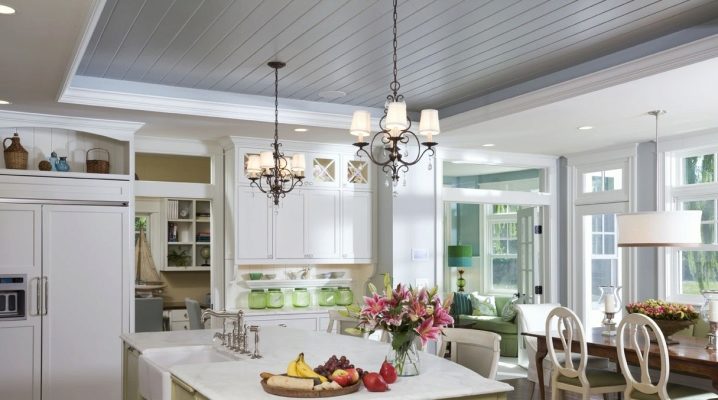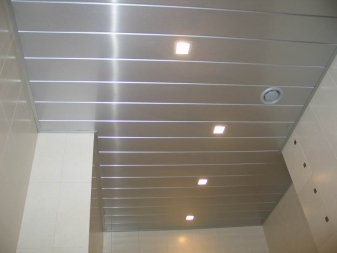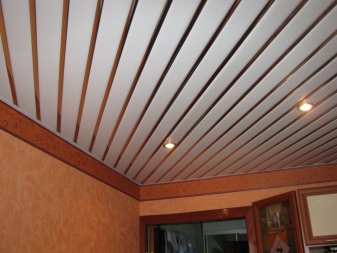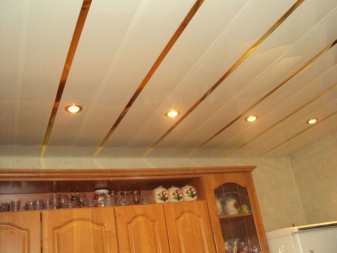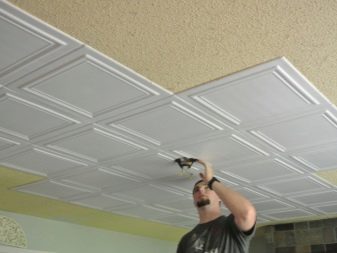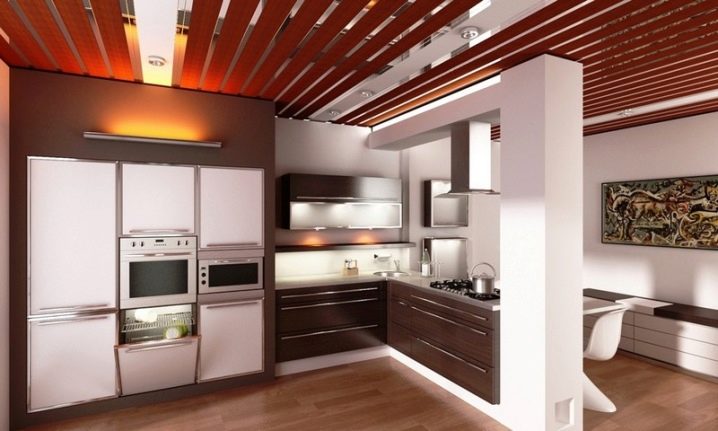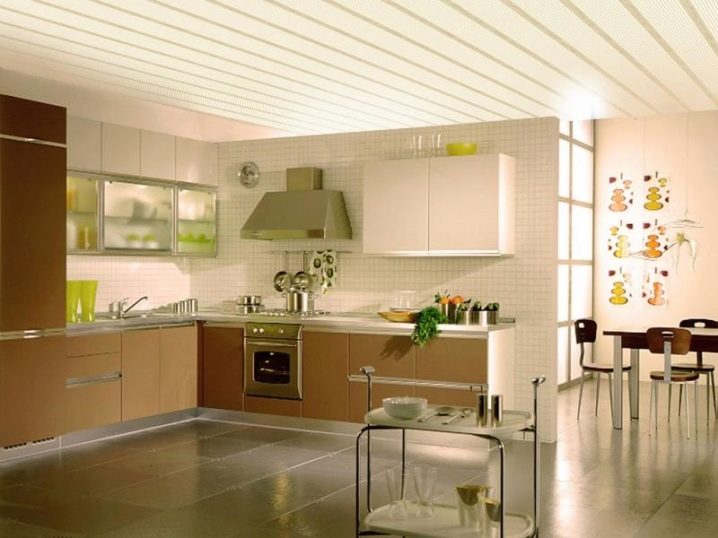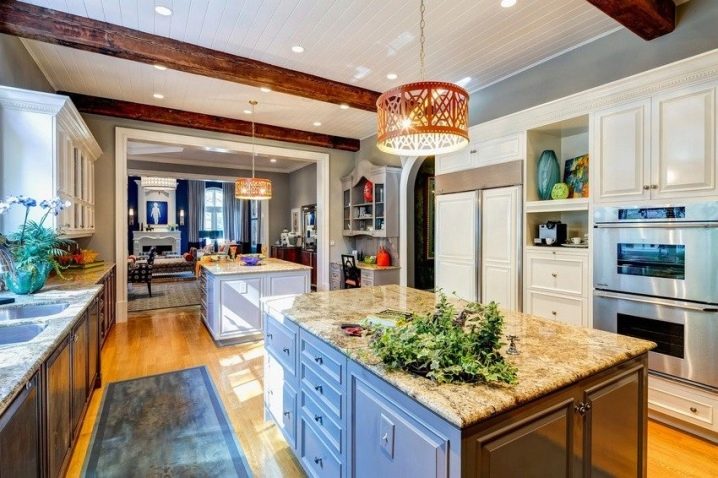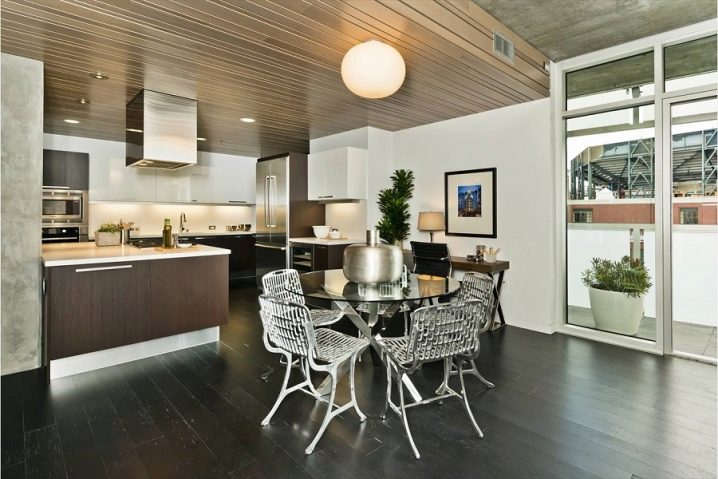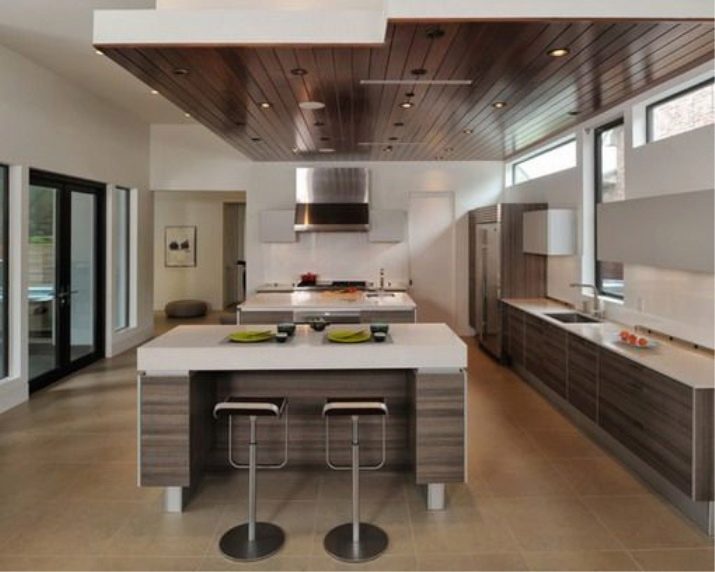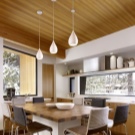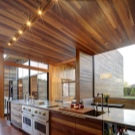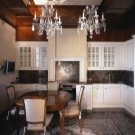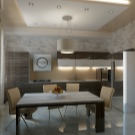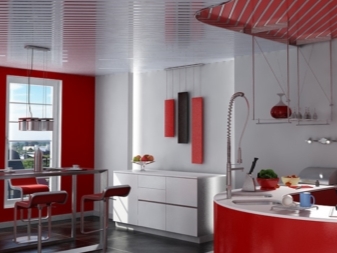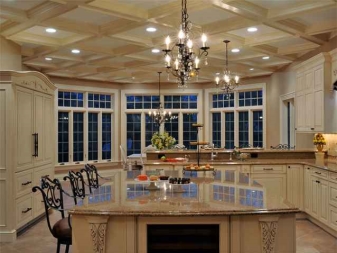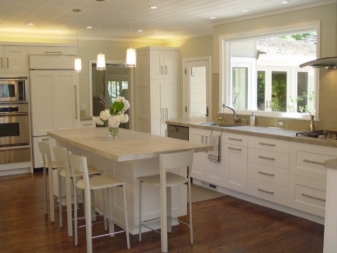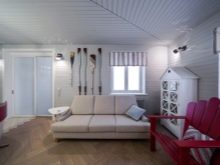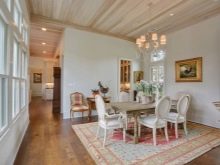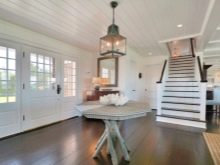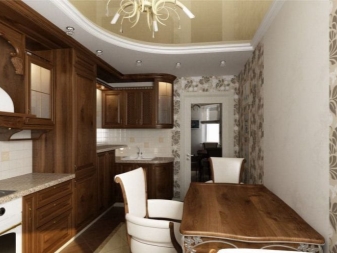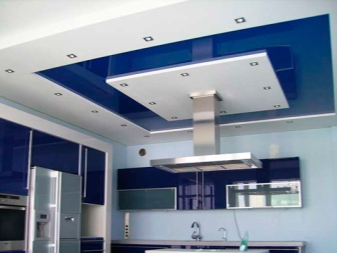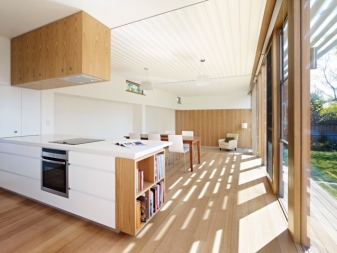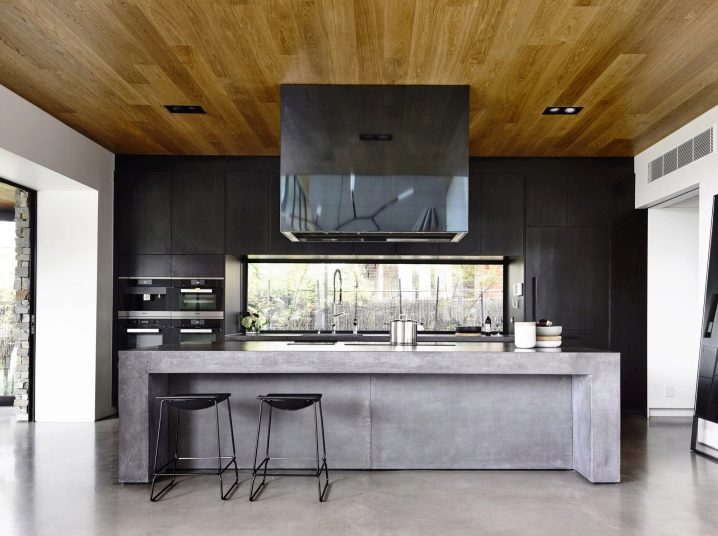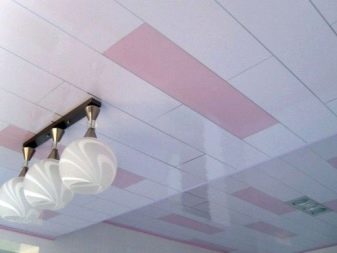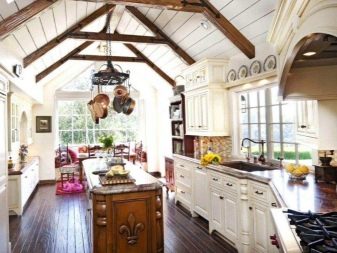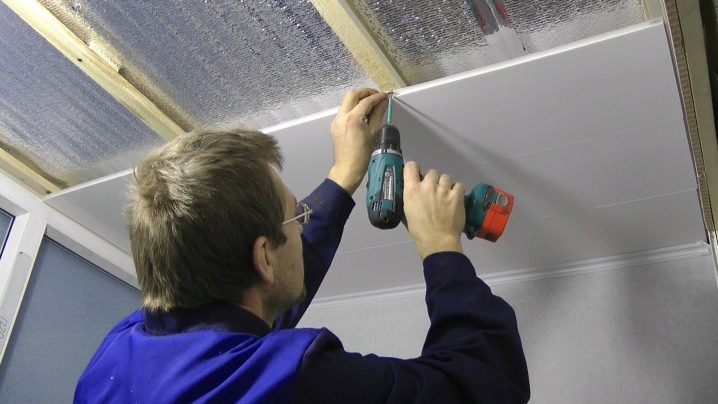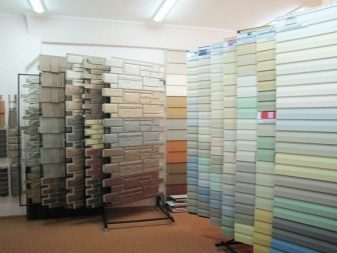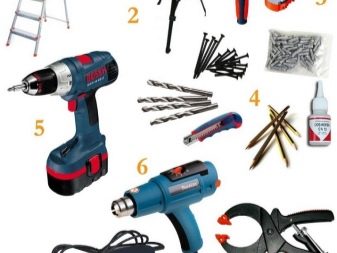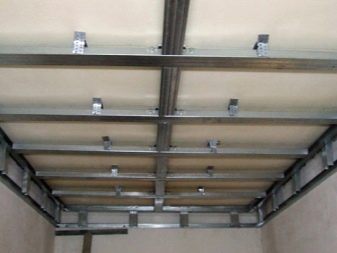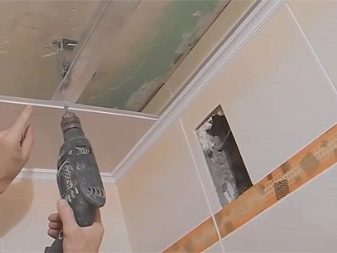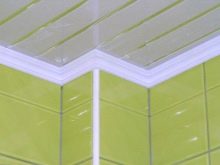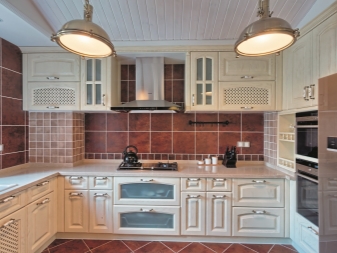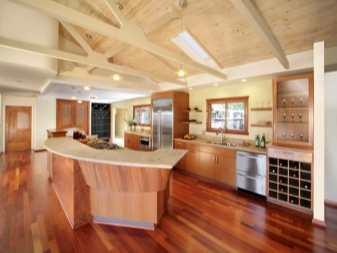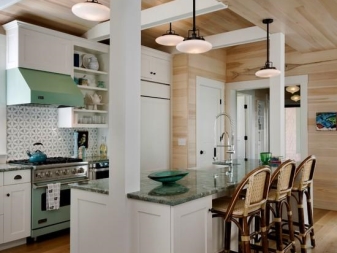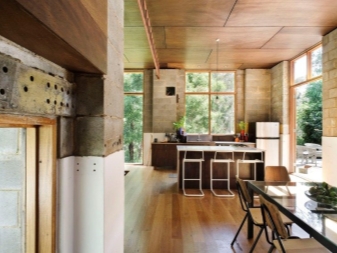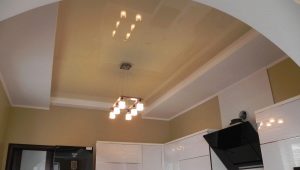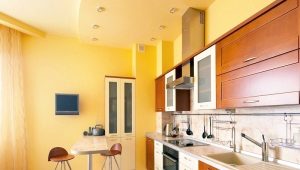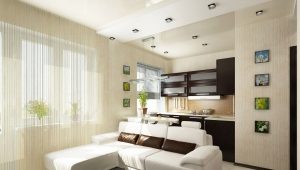Ceiling in the kitchen of plastic panels
Varieties: advantages and disadvantages
When repairing a kitchen, a new ceiling should meet the following requirements:
- be protected from moisture, soot, steam, high temperatures;
- the coating should be easy to wash off grease stains;
- material, if possible, you must choose an environmentally friendly, not harmful to health;
- the ceiling should look good in the interior, do not strain your eyes.
Many want that, with all these conditions, the cost of materials and installation should not be devastating for the family budget. In this case, a good choice would be the ceiling in the kitchen of plastic panels.
Plastic panels of expanded polystyrene and polyvinyl chloride have long been used for interior and exterior decoration of residential premises. There are a huge number of varieties of colors on sale, and the standard sizes of sheets without problems allow them to be transported, cut and mounted at home.
Experienced craftsmen indicate the following advantages of plastic panels:
- resistance when exposed to moisture, no deformation at temperature drops;
- many colors and textures for any interior;
- environmental Safety;
- ease of installation: cutting and mounting to the ceiling and walls;
- low cost compared to most other types of ceiling in the kitchen;
- easy care
Before installing the ceiling of plastic panels, you should know the disadvantages of this finishing material:
- susceptibility to mechanical damage, with a strong impact on the panel may remain noticeable traces, the sheets are easily broken;
- the appearance of the surface is inferior to expensive finishing materials: wood, tile, liquid wallpaper, mirrors, etc .;
- deformation is possible under the action of very high or, on the contrary, very low temperatures, for example, if building materials are stored for a long time in winter outside.
But there are more significant advantages, so many owners choose this cheap and simple way to finish the kitchen ceiling. There are 2 types of raw materials.
Styrofoam It is made from polymeric mass of polystyrene with the addition of gas under the action of high temperature and pressure. To give the refractory properties of its composition is added carbon dioxide. The resulting mass is very plastic, so you can get any parts in the molds, including flat panels for interior decoration. Due to the porous structure of gas bubbles in a substance, its parts have a low density, and large panels, for example, 3000 for 250 mm standard for construction, are light in weight.
In the kitchen, where there is always high humidity and a favorable breeding ground for bacteria, expanded polystyrene is preferred because it is not amenable to biological effects. It has good thermal insulation and noise protection, which is important for a city apartment. Under room conditions, sheets of this material are able to maintain their physical properties and appearance for several decades.
Polyvinyl chloride - a product of organic synthesis, in its raw form, is small colorless granules or colored in different colors. By processing in the molds of these granules, PVC panels are prepared for construction and repair. They are matte and glossy, all kinds of colors and different lengths and widths.By design can be suture and seamless. PVC panels have 2 layers, between which are stiffening ribs. For a kitchen ceiling, this is a profitable option due to its low cost, ease of installation, immunity to external influences and a neat appearance.
Design
The most common colors of the plastic ceiling in the kitchen are white — neutral or with a hint of yellow, blue, and pink. This color is chosen because it visually enlarges the space, does not strain the eyesight and is combined with any interior. Depending on the prevailing colors of kitchen furniture, walls and floors, you can choose other options, but the main condition is that they are not dark or aggressively bright. For example, red, orange, poisonous yellow is an unfortunate decision, and beige, olive, light blue or nut is quite appropriate.
The easiest option for plastic ceilings is single-level in the entire kitchen area from sheets of one color. If you use seamless PVC sheets, you can easily create a perfectly smooth, uniform surface, no worse than when painting with acrylic or silicone paint, and the finishing process is not much more complicated.Plastic sheets are easily cut even with curly lines, so it is possible to create built-in lamps in the amount necessary for comfortable lighting in the kitchen when creating a frame for a suspended ceiling.
If you try a little with the installation of a metal profile frame, you can create plastic multi-level kitchen ceilings. The lightness of the material allows you to make a reliable and safe construction. For the kitchen, the most suitable cover with direct transitions without curly lines and with additional lighting of the work area.
On the kitchen ceiling, narrow plastic sheets with a woody structure that imitate lining will look very good. They will create a cozy image of natural wood. And their installation will be much easier than the installation of natural wood lining.
Sometimes, if PVC panels with visible seams are used, the direction of the strips can play a visual role in the interior. Longitudinal strips can slightly increase the space along the visible length, and transverse ones expand it. This should be considered if the owners are not satisfied with the dimensions of the room.
You can use a combination of colors alternating sheets of plastic.For example, a very good arrangement of the ceiling of white and beige seamless strips with a width of 250 mm, which fits to the kitchen set in the color of natural wood. The combination of colored plastic panels can add chic to the interior and make you forget that relatively cheap finishing material is used. And visually expand to add height in the kitchen are capable sheets of a bluish or green color. They will create a calm and peaceful atmosphere, which is so important for this room in the apartment.
A great design idea is a two-level ceiling with a direct transition to the place where the work area begins with the table top. It is not difficult to make a frame and fix elements of the decor, and a small change in the design of a direct ceiling will look very impressive. To do this, the level above the table top is lowered by 10-15 cm. At the same time, several LED spotlights can be mounted into the ceiling along the entire working area. Embedding them in plastic is very easy, and for a sufficient level of illumination you will need 4-5 light bulbs.
DIY decoration
It is very easy to sheathe the kitchen ceiling from plastic panels even to a person who does not have experience in interior decoration. The most difficult part of this repair is to install the frame - even and strictly along the horizontal level. And the fastening of PVC sheets or polystyrene foam on it is very simple and takes place in a matter of minutes.
The work will require the following tools and materials:
- the number of plastic sheets required for the ceiling area;
- U-shaped plastic profiles;
- corner metal profiles for the entire perimeter of the kitchen;
- plastic corner skirting;
- dowel screws and screws;
- roulette and ruler;
- pencil or marker;
- stationery knife;
- perforator with a drill for concrete;
- screwdriver;
- level 1.5 - 2 m long;
- ladder.
Before you make the purchase of sheets, you need to calculate the area of the kitchen ceiling and on it to determine the required number of plastic panels. It is worth acquiring them with a certain reserve of 10-20%, taking into account possible defects and additional solutions during the installation process. Before work, it is necessary to ensure the working area as much as possible, to close furniture and household appliances in the kitchen from falling into the trash.Further, the level of installation of the metal frame along the perimeter is marked on the walls. It is optimal to take 10-15 cm from the upper ceiling, this will allow to hide possible wires, sockets for lamps and other communications in a niche, and also will not select a considerable height from the room.
Further on the dowels and screws, metal profiles are fixed, U-shaped plastic profiles are installed on them to match the color of the panels. Then the knife is cutting the sheets of the desired size and their installation. Due to the flexibility of the plastic, the elements can easily be inserted into the finished frame, pressed tightly against each other and leveled.
In order to hide the corners between the walls and the ceiling, use special skirting. They can be made from the same polyvinyl chloride or polystyrene foam, foam plastic. These decorative elements have a different shape in profile and variety of colors for every taste. To pick up color under the installed panels will not make special work. You can use lightweight parts that are attached to the polymer glue, it is quite reliable and protected from moisture. And you can fix the flow plinth on small screws, self-tapping screws.
Care
It is very easy to clean plastic elements from ceilings - you can clean their smooth surface from possible dirt with a regular wet cloth with soap or a cleaning agent. Due to the glossy structure of the outer layer of the panels, dust does not stick to them. The need to wash these ceilings usually occurs no more than once a month.
If a sheet has become unusable, deformed, or cracked, then replacing it with a new one occurs elementary easily without any tools or installation work.
